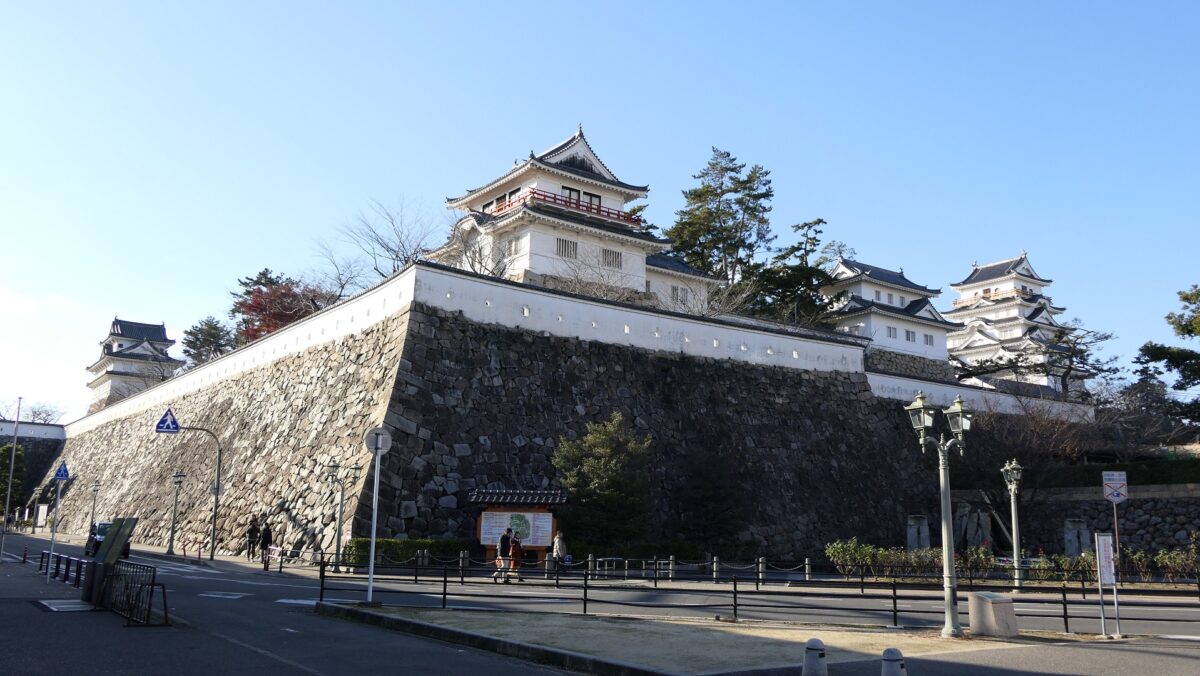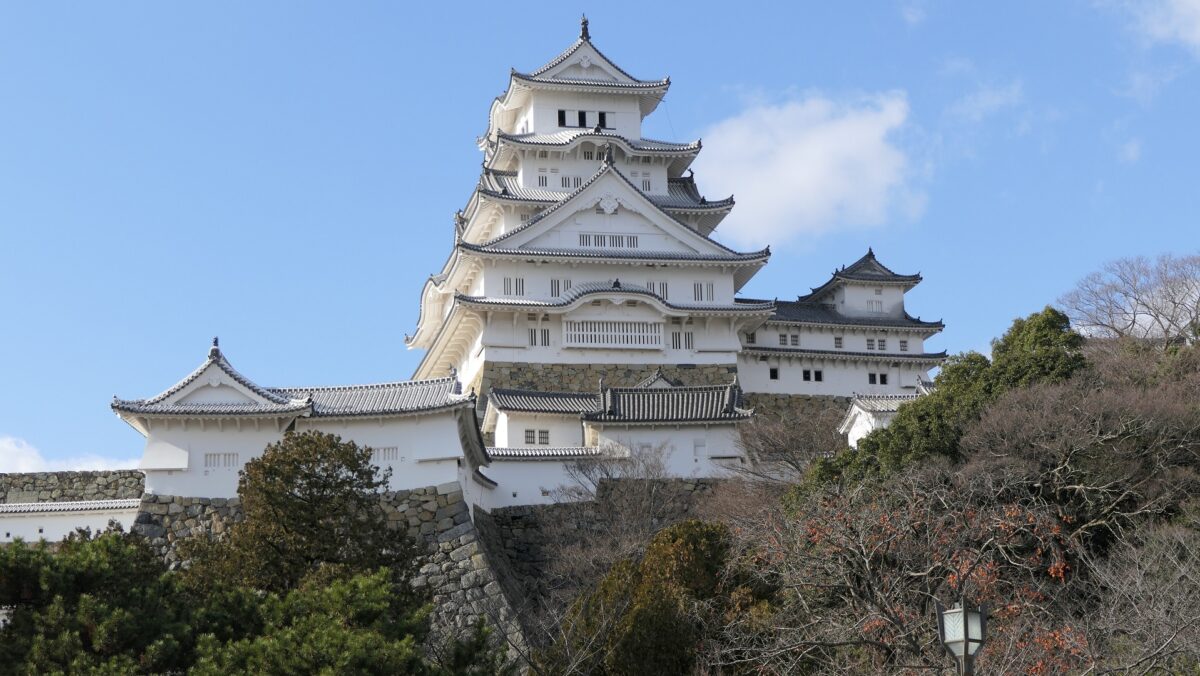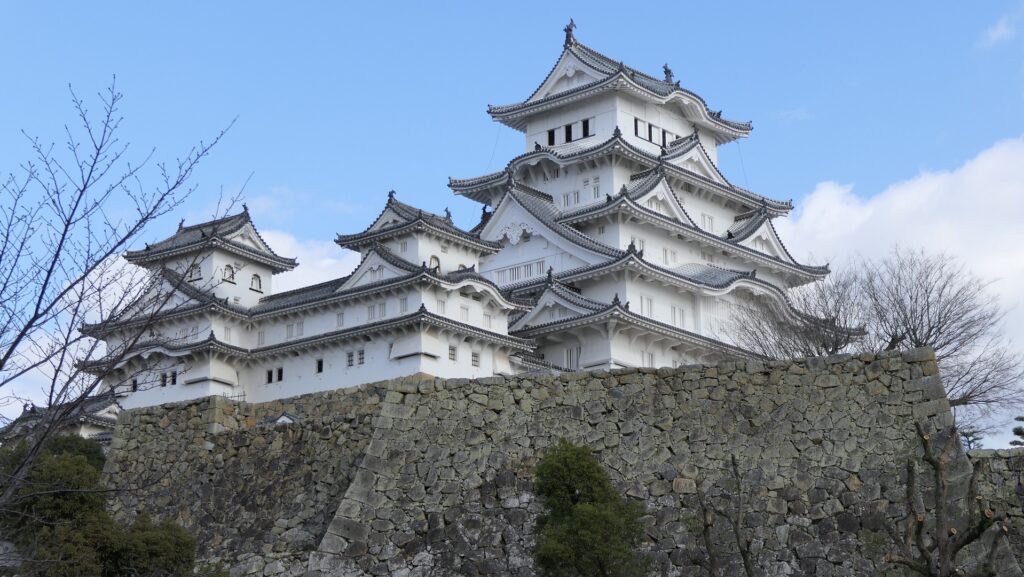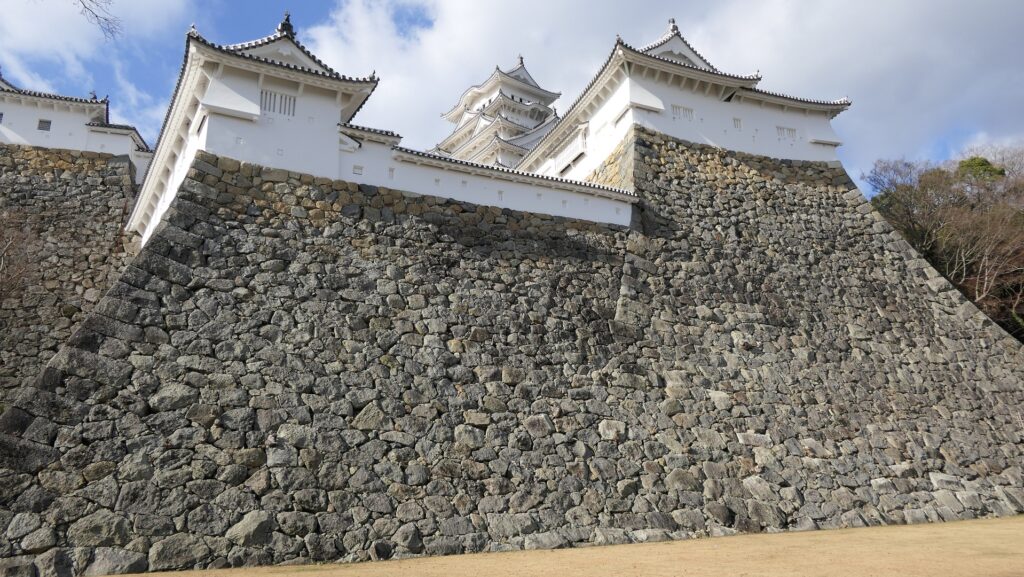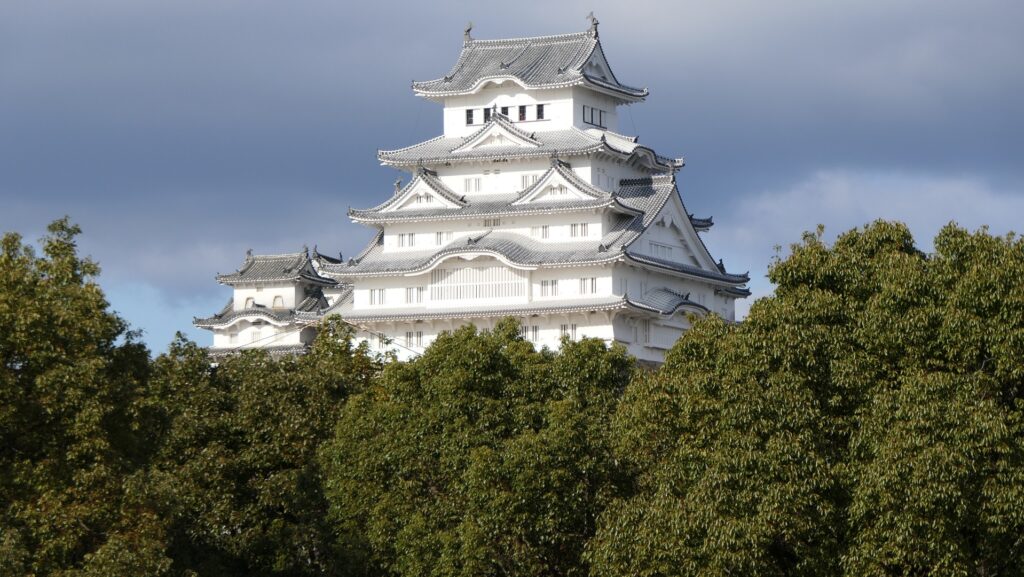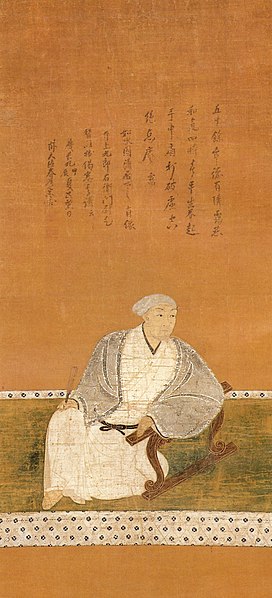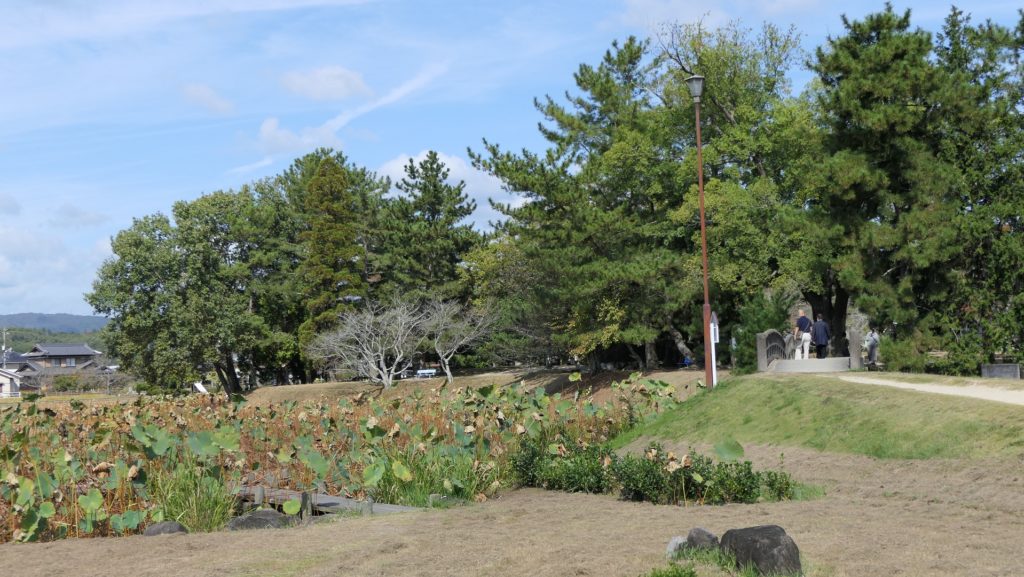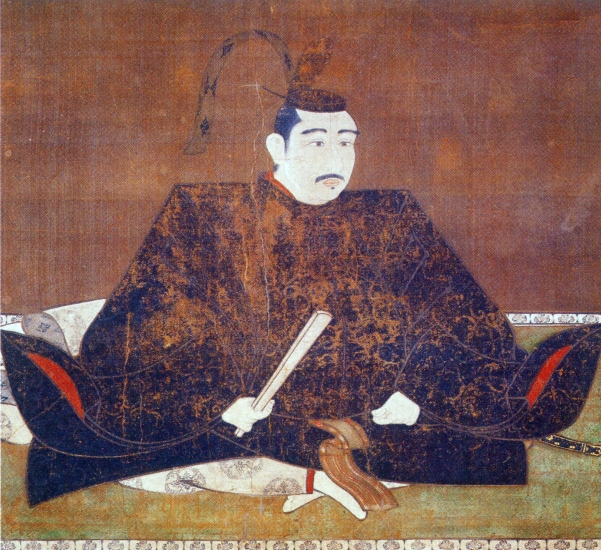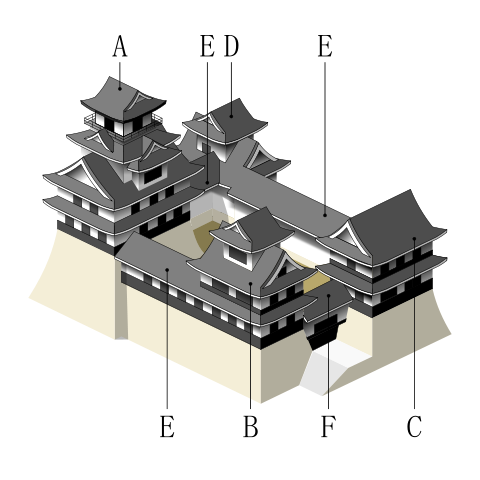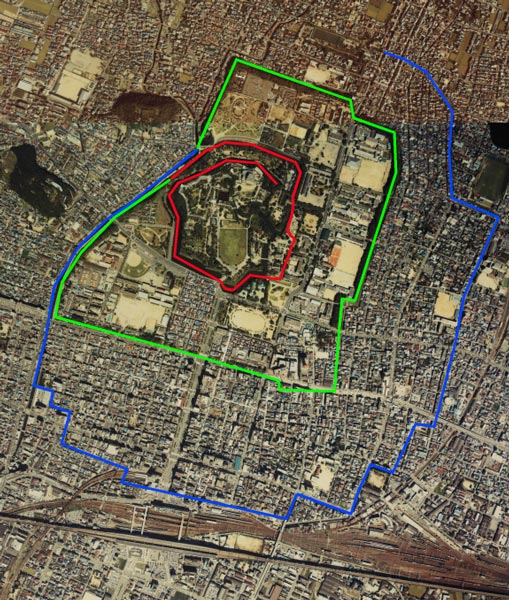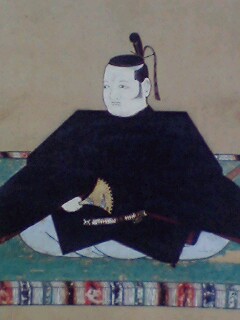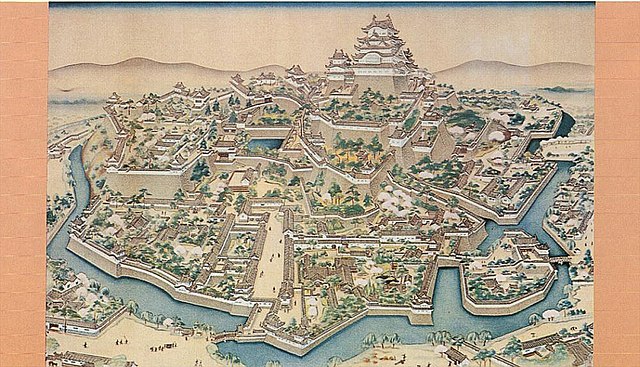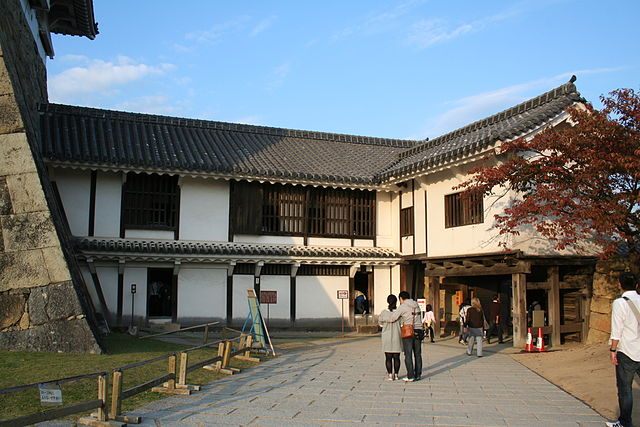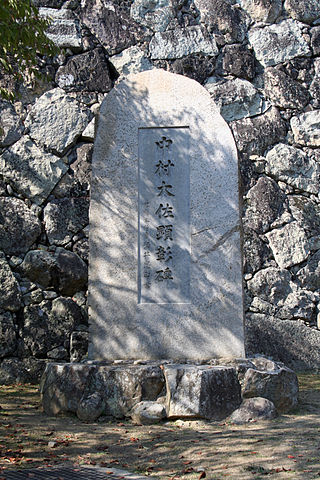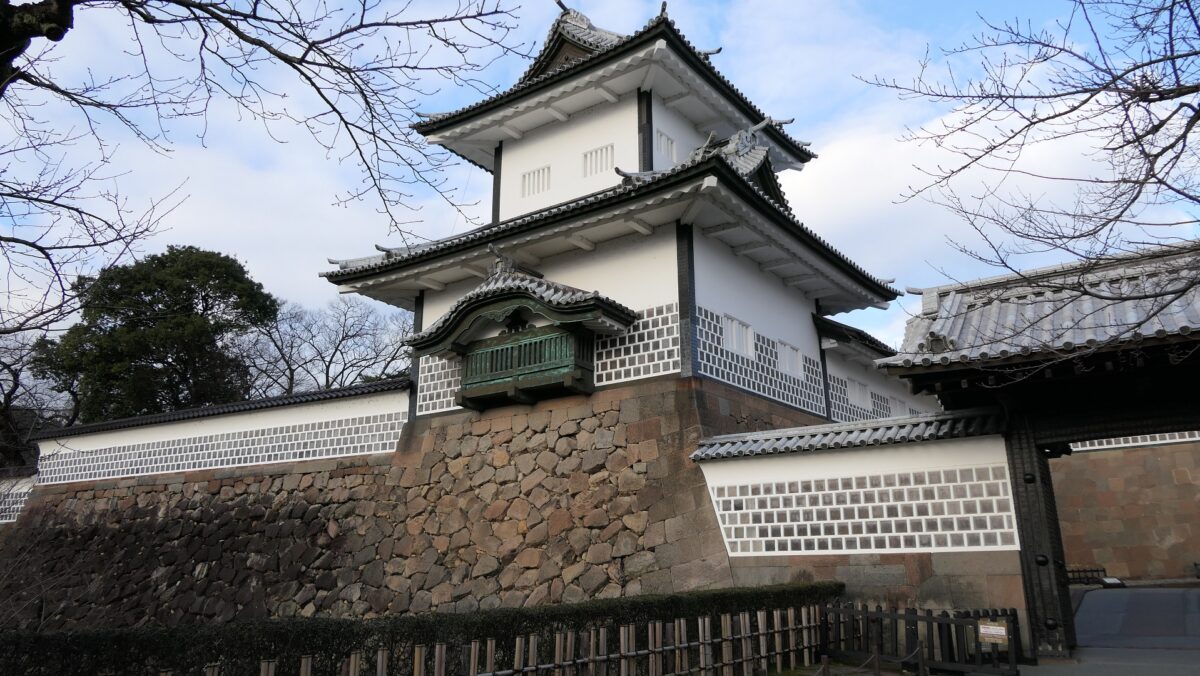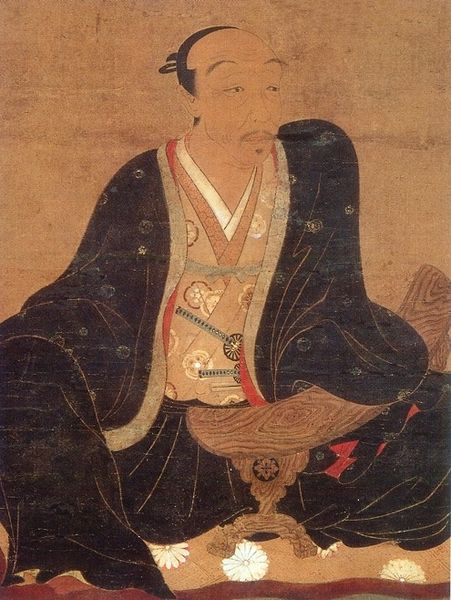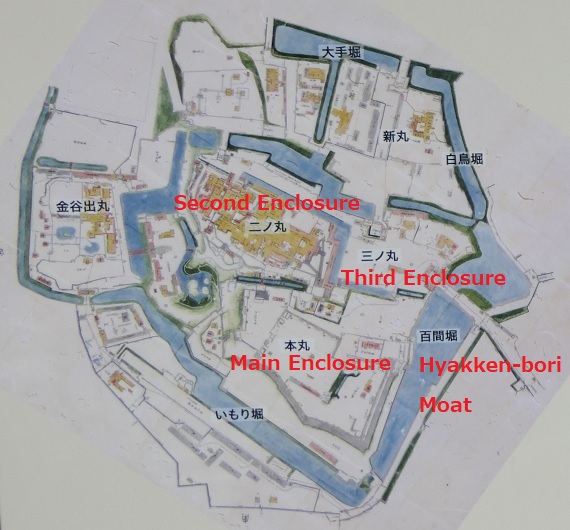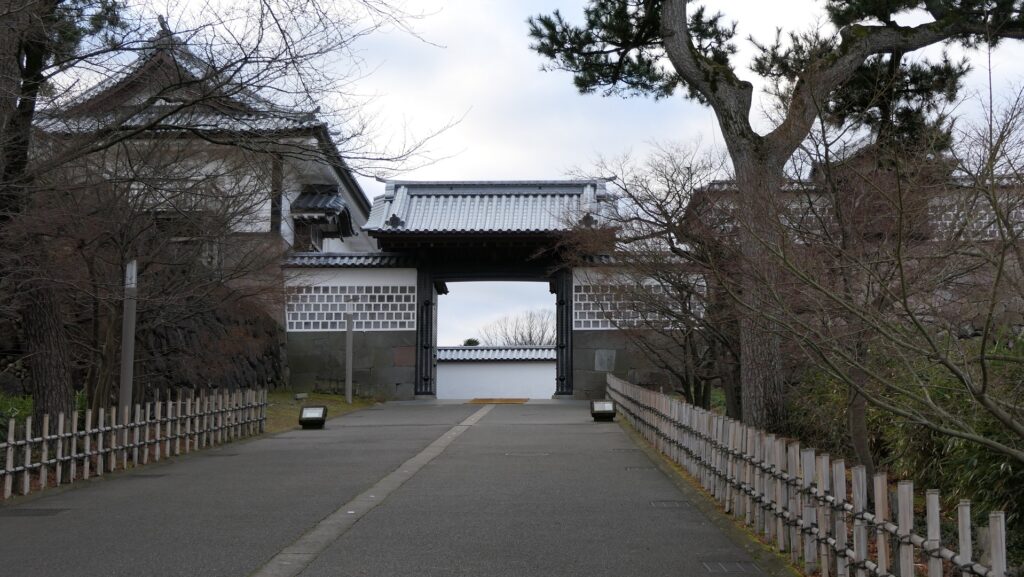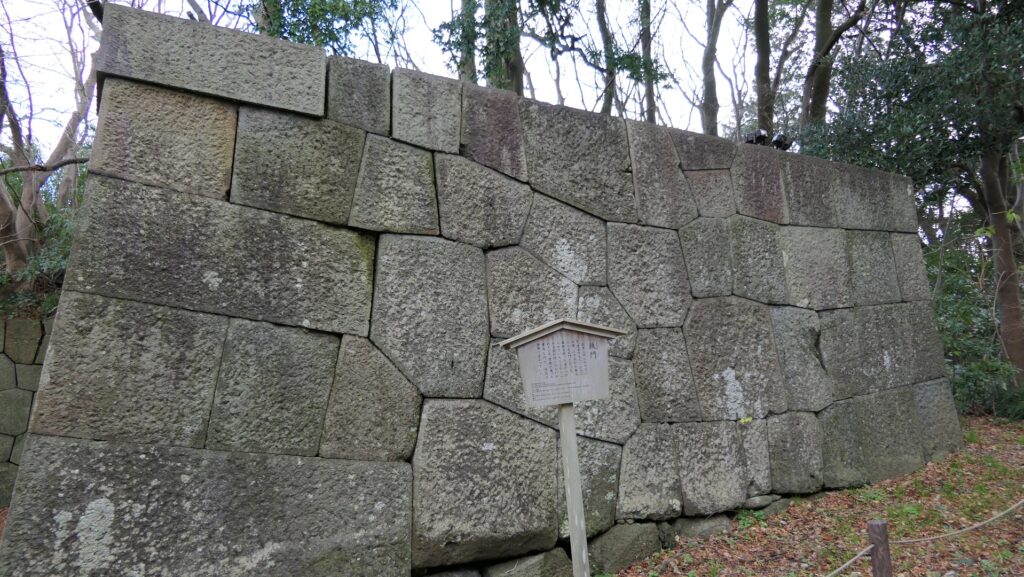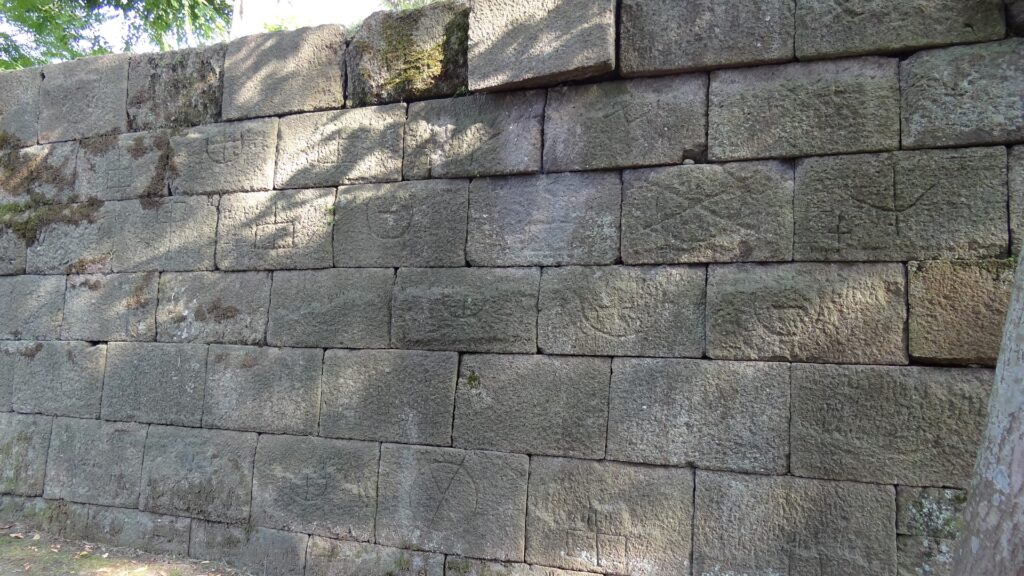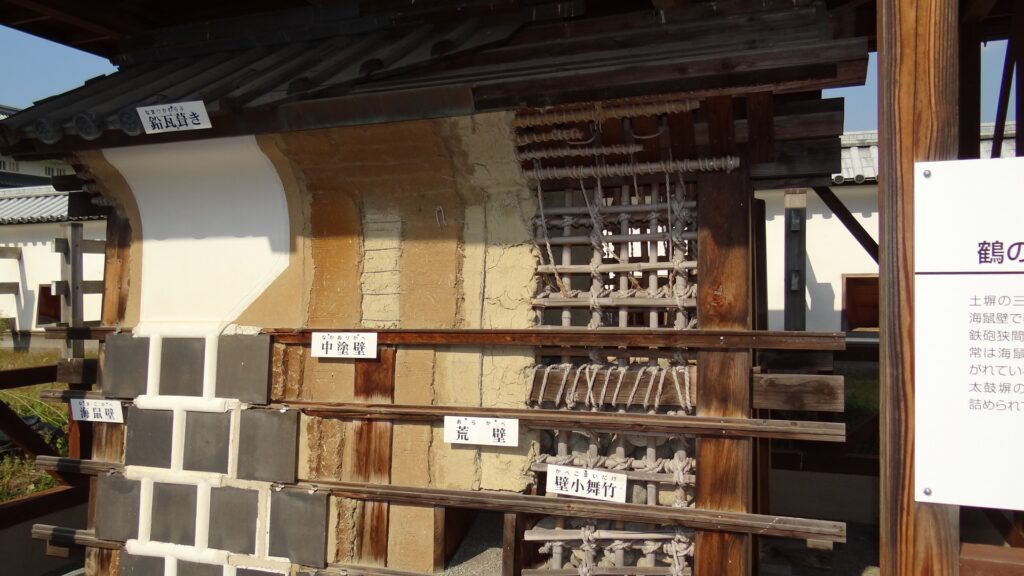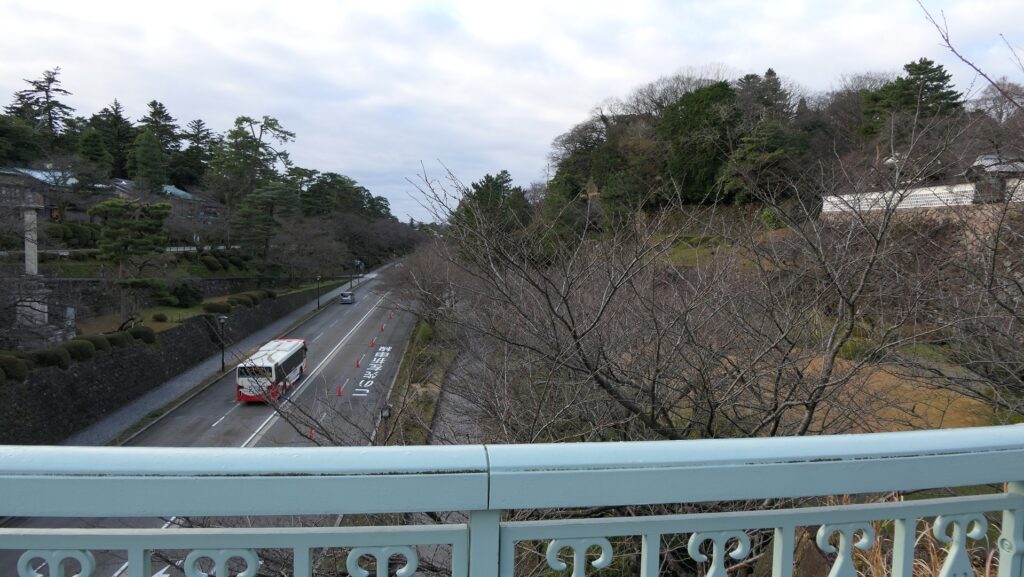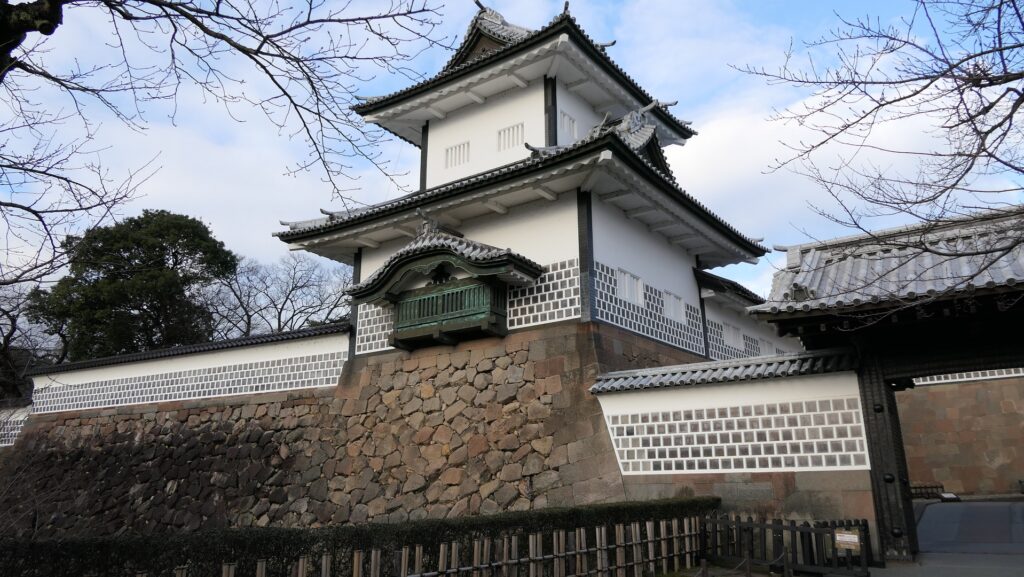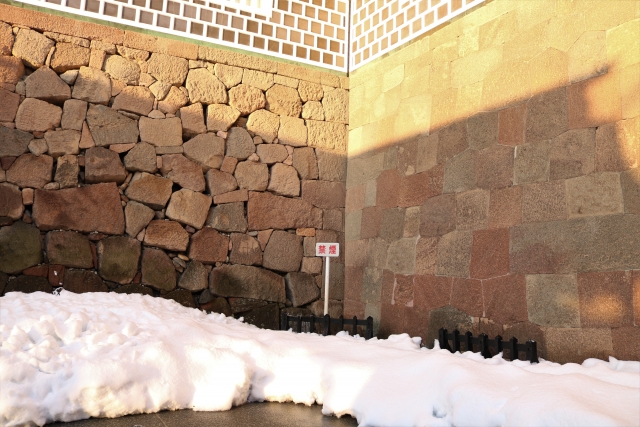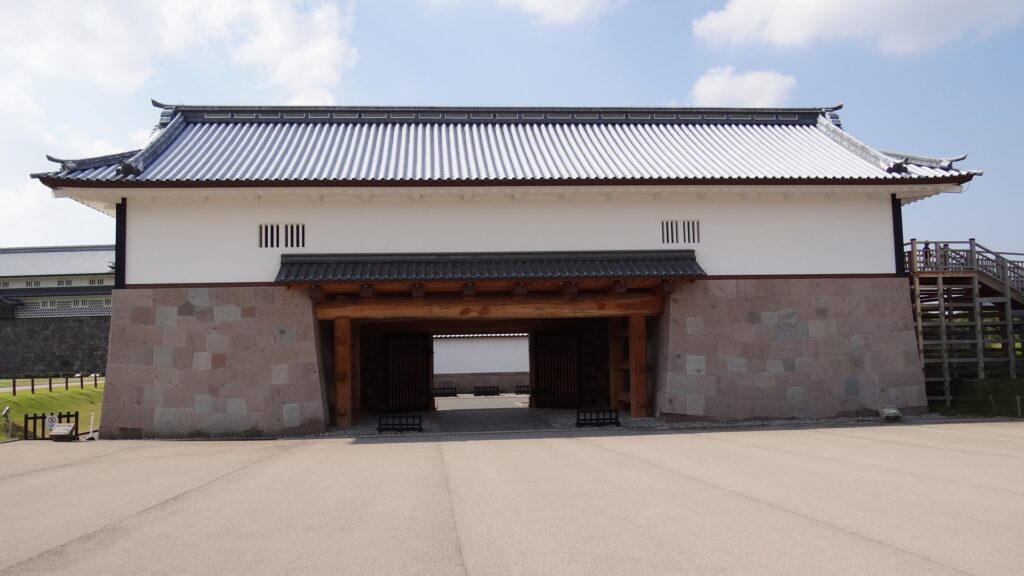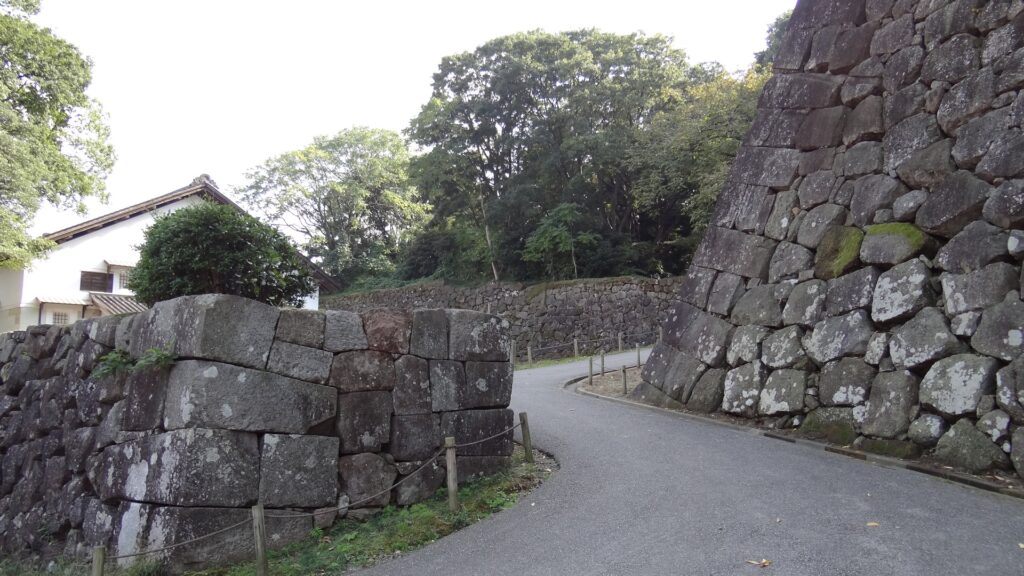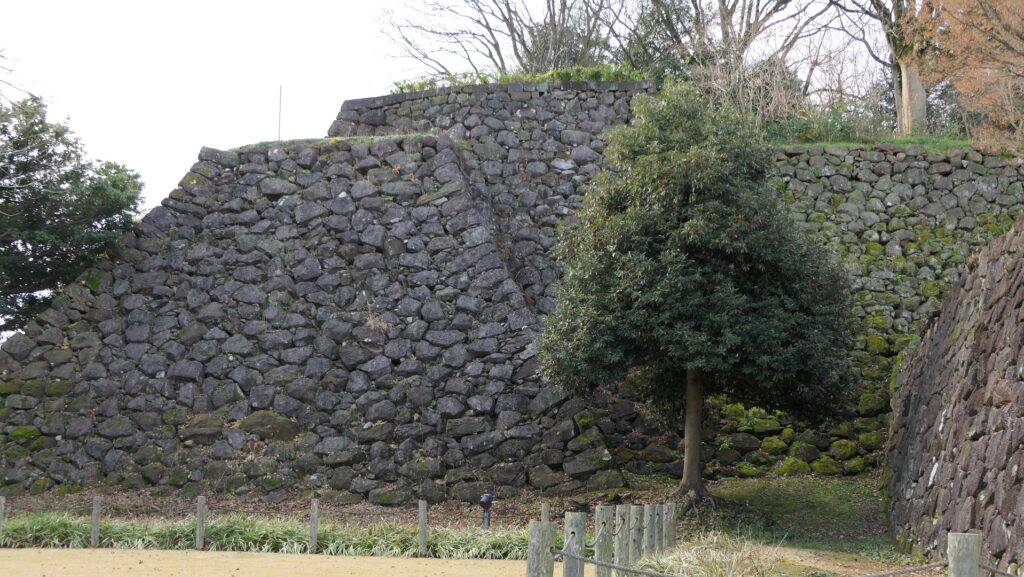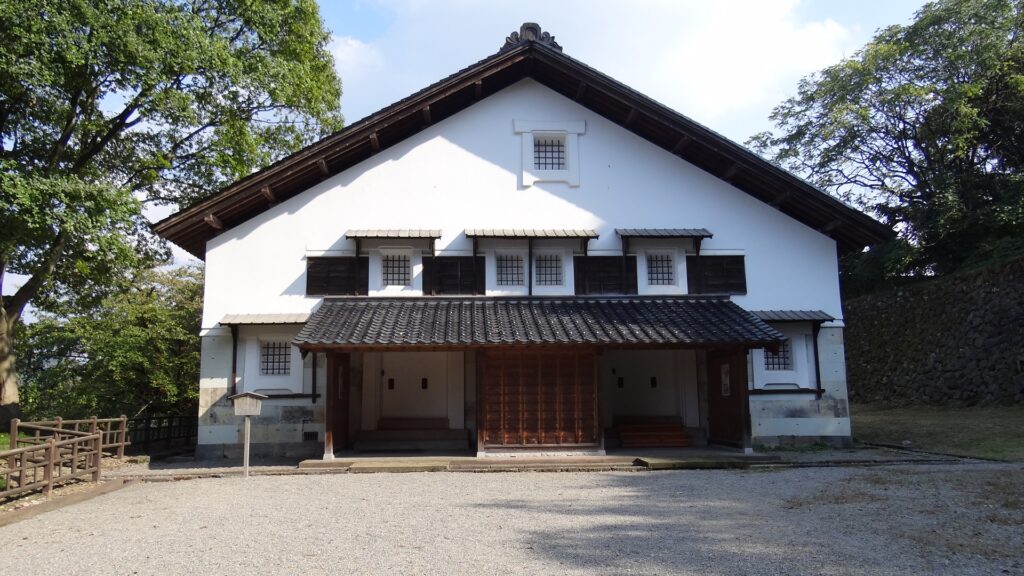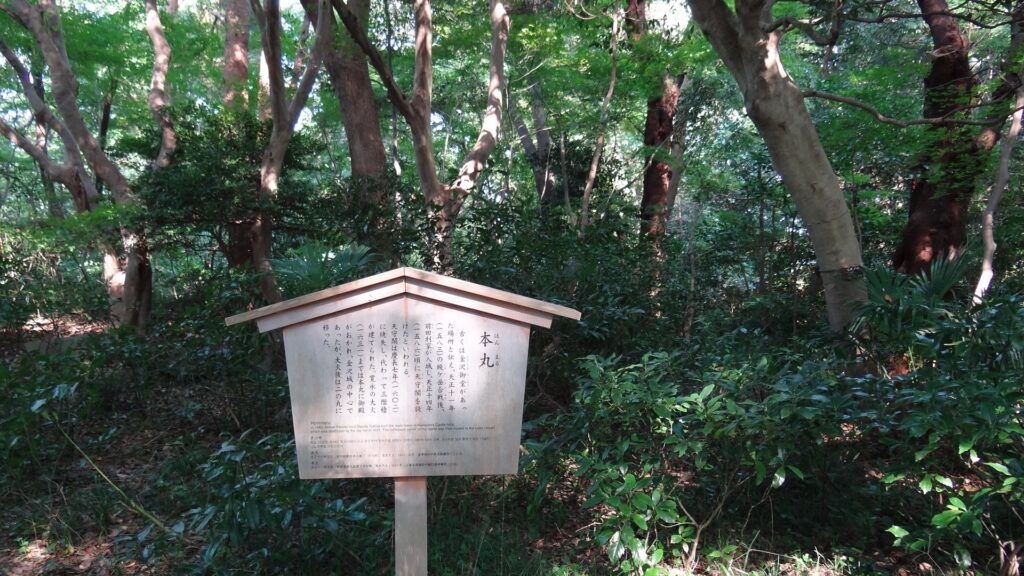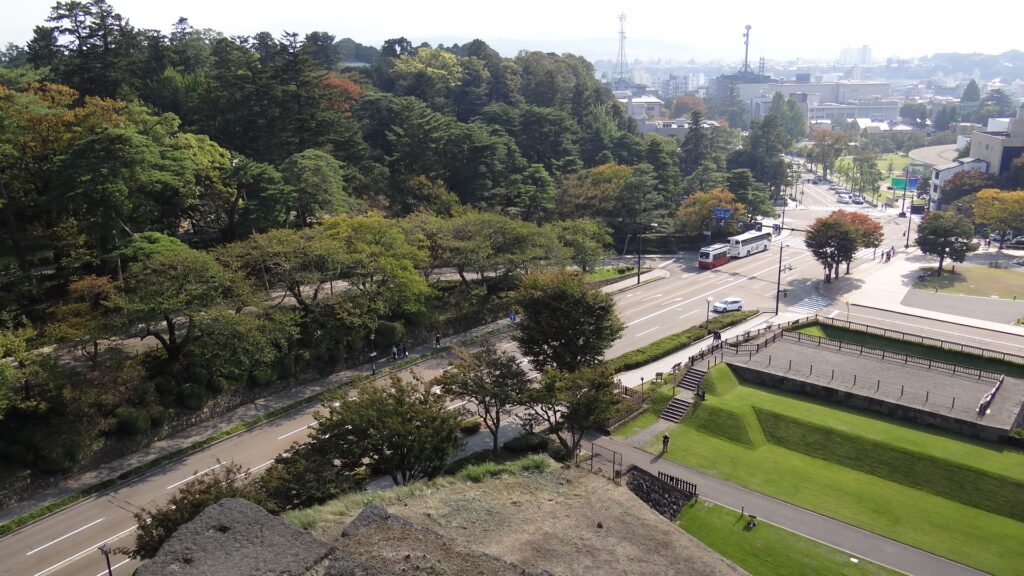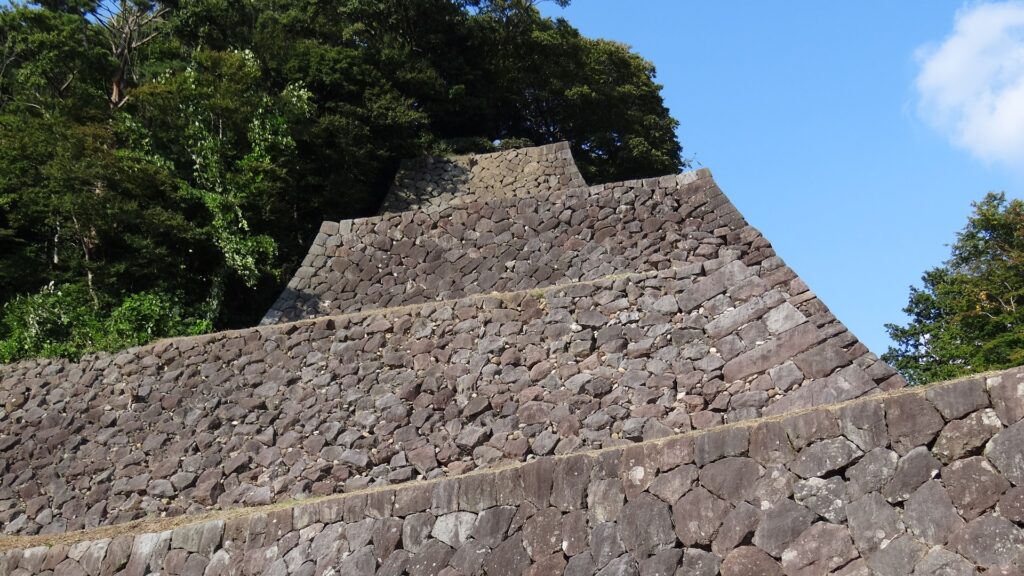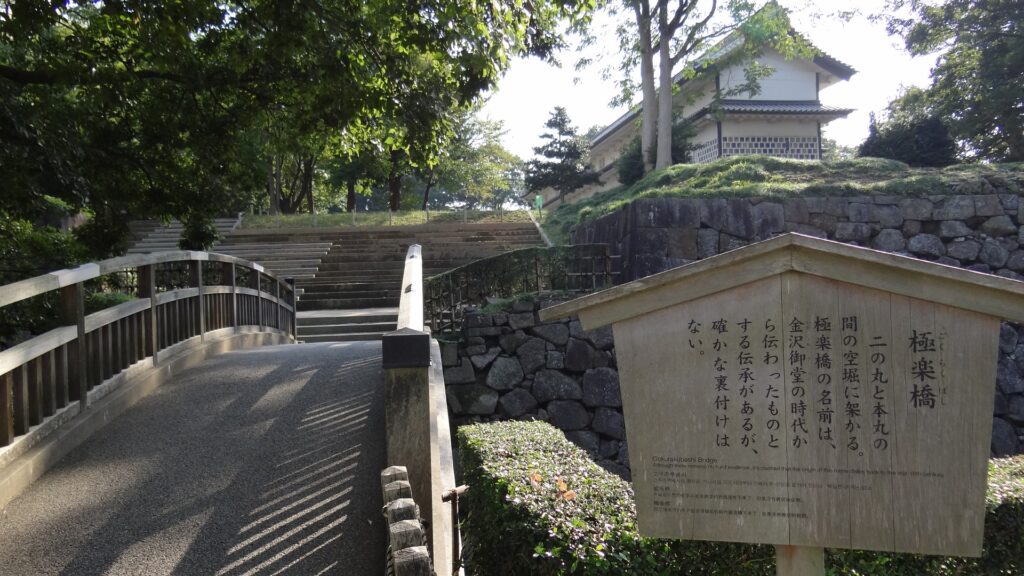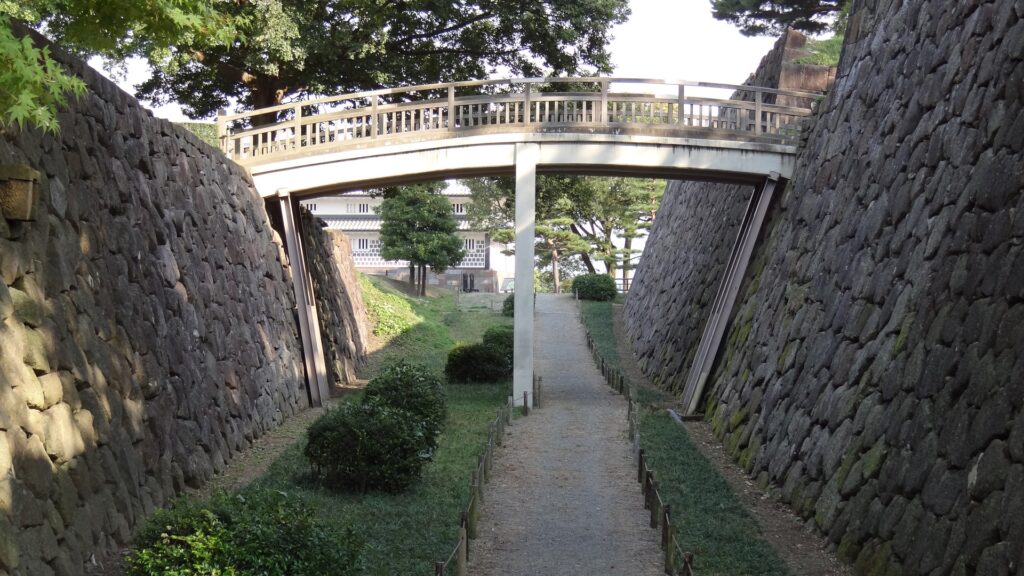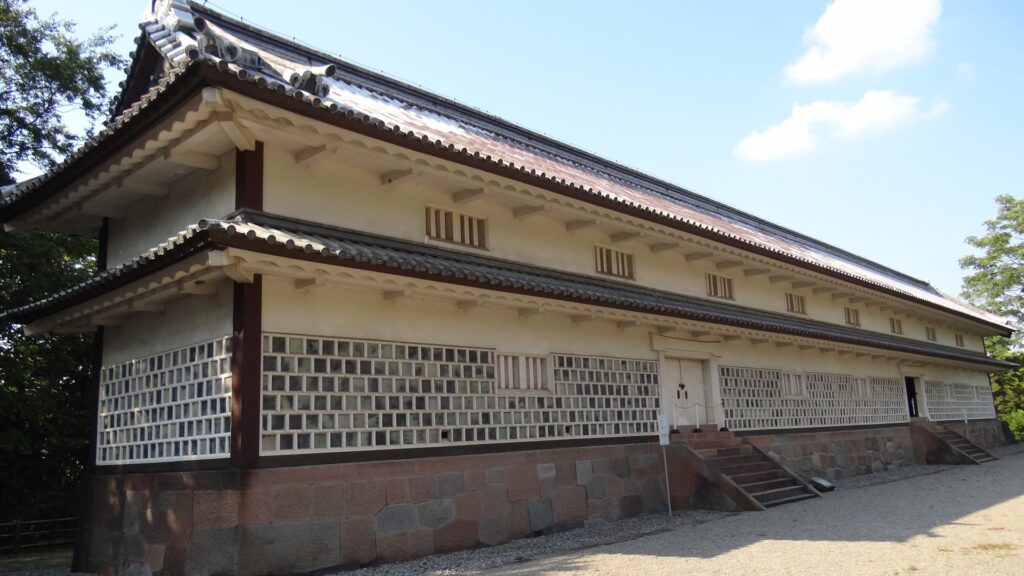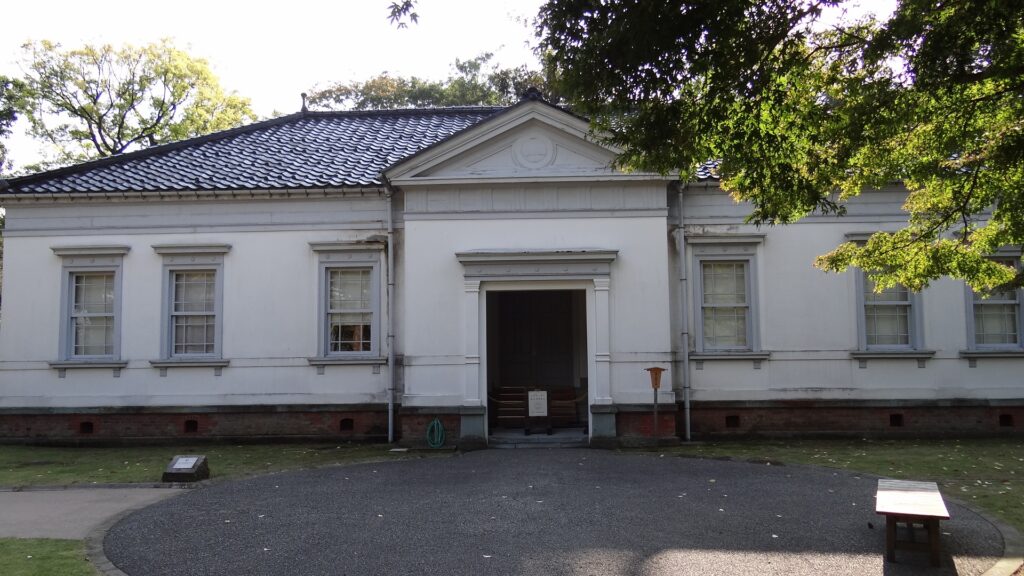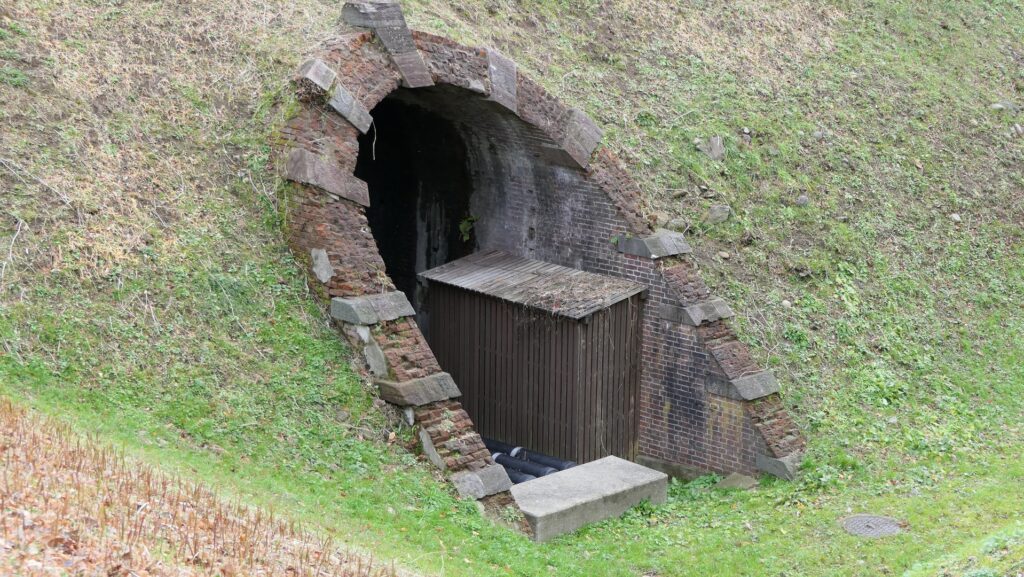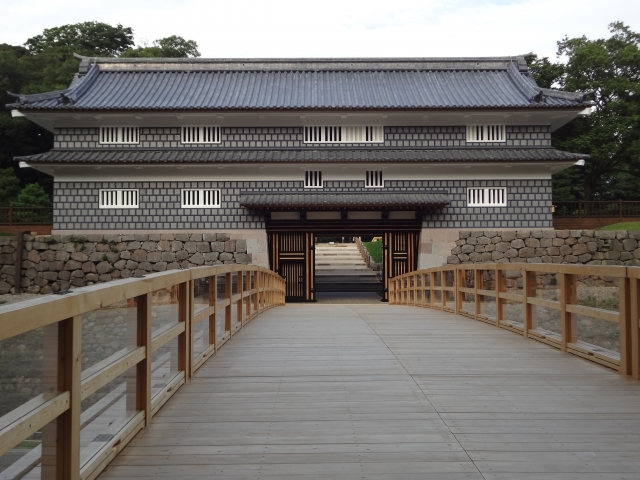立地と歴史~Location and History
新しい城と町~New Castle and Town
福山城は、広島県東部の福山市にあります。現在、この市は県で2番目の大都市ですが、城が築かれる前は町はありませんでした。それまでは、この地域は広島城にいた福島氏が支配していました。
Fukuyama Castle is located in Fukuyama City to the eastern part of Hiroshima Prefecture. Today, the city is the second largest city in the prefecture, but there had been no town before the castle was built. Before that, the area belonged to the Fukushima Clan who lived in Hiroshima Castle.
1619年、福島氏は徳川幕府により改易され、その領地は他の大名たちに分割されました。幕府は、そのうちの一部の地に譜代大名の水野勝成を送り込み、西日本の大名を監視させました。勝成は、芦田川という川のデルタ地帯にあった丘の上に、新しい城を城下町とともに築くことになりました。この新しい城は福山城と呼ばれ、日本で最後に築かれた大規模な城と言われています。これは幕府が1615年以来、原則として新しい城を築くことを禁じていたからです。福山城はとても稀なケースだったのです。
In 1619, the clan were fired by the Tokugawa Shogunate and their territory was divided among other clans. The shogunate sent Katsunari Mizuno, a hereditary feudal lord to one of the divided territories, to monitor other lords in western Japan. Katsunari was responsible for building a new castle on a hill in the delta of a river called Ashidagawa with a new castle town. The new castle was called Fukuyama Castle, which is said to be the last newly built large-scale castle in Japan. This is because the Shogunate basically banned the lords from building any new castles from 1615. The case of Fukuyama Castle is very rare.
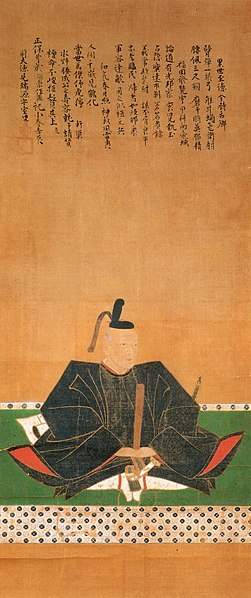
天守と櫓~Main Tower and Turrets
この城には、本丸、二の丸、三の丸という3つの曲輪が築かれました。内堀が、二の丸と三の丸の間に掘られました。外堀は城全体を囲んでいました。多くの櫓や門が築かれるか、他の城から移築されました。一例として、伏見櫓は伏見城から移されたものです。天守は本丸にあり、5層で、屋根は唐破風や千鳥破風により装飾されていました。この天守のユニークな点は、北にある丘からの砲撃に備え、北側が全て黒い鉄板に覆われていることでした。建築工事は3年間続き、1622年に完成します。
The castle was built with three enclosures – the Main, the Second, and the Third Enclosures. The Inner Moat was built between the Second and the Third Enclosures. The Outer Moat surrounded the whole castle. Many turrets and gates were built or moved from other castles. For example, the Fushimi Turret was moved from Fushimi Castle. The Main Tower was on the Main Enclosure, which had five layers and its roofs were decorated with Chinese style gables and triangular shaped gables. The unique feature of the tower was that its northern side was all covered with black steel plates to prevent damage from canon fire from other hills in the north. The construction took three years before the castle was completed in 1622.

優れた城主たち~Excellent Lords of Castle
勝成はまた優れた政治家であり、江戸時代の日本で最も有名な上水道の一つ、福山上水を開設しました。その後も、何人もの城主が幕府中枢で重要な役職を務めました。例えば、阿部正弘は筆頭老中となり、1853年と1854年のアメリカのマシュー・ペリー来航といった幕末の困難な外交に対処しました。ところが、この城は1868年に新政府軍からの標的にされてしまいます。砲撃が開始され、砲弾が天守に飛び込みました。守備側は降伏したのですが、その砲弾は幸い不発でした。
Katsunari was also a good politician who created the Fukuyama Water Supply, one of the most famous water supplies in the Edo Period in Japan. After that, several lords of the castle also had important roles in the central Shogunate. For example, Masahiro Abe became the head of the Shogun’s council of elders and handled the difficult diplomatic problems at the end of the Edo Period such as the arrivals of Matthew Perry’s fleet from the US in 1853 and 1854. However, the castle was targeted by the New Government Army in 1868. They opened fire and a cannon ball entered into the Main Tower before the defenders surrendered. The ball, fortunately, didn’t explode.
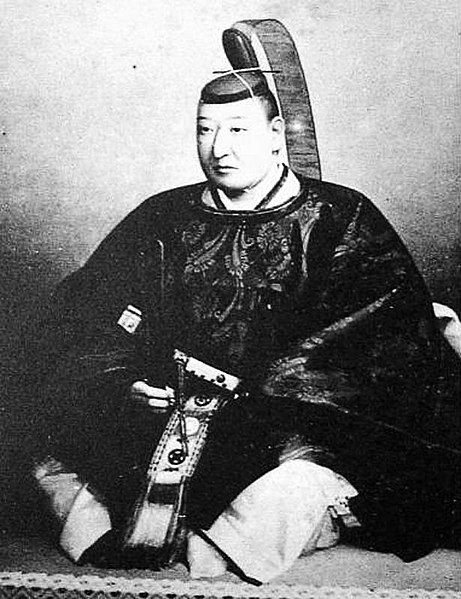
特徴~Features
駅からすぐの本丸~Main Enclosure next to Station
現在、福山城は福山駅のすぐ近くにあります。もしくは駅が城の中にあるとも言えるでしょう。実際駅は、埋められた内堀、二の丸、三の丸の上に建てられたのです。駅の北側に沿っている道は、二の丸の端に当たります。本丸と、二の丸の一部のみが福山城公園として残っています。
Now, Fukuyama Castle is very close to Fukuyama Station, or we can rather say the station is in the castle. The station was actually built on the reclaimed Inner Moat, the Second Enclosure, and the Third Enclosure. The street along the northern side of the station was the edge of the Second Enclosure. Only the Main Enclosure and part of the Second Enclosure remain as Fukuyama Castle Park.
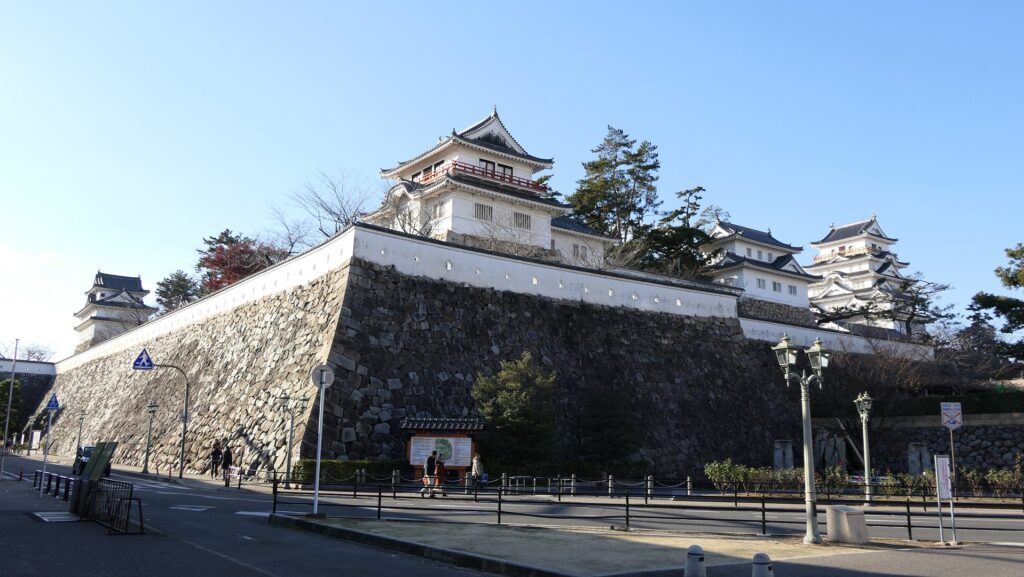
福山駅の北出口を出ると最初に、二段の石垣に囲まれた本丸の姿が見えます。とても力強い存在感です。石垣の表面の一部には、1945年の福山大空襲のときに生じた焦げ跡が見られます。東側にある公園の正面口には、現代になって作られた道があり、容易に本丸の中に入って行けます。
You can first see the Main Enclosure surrounded by two-step stone walls from the north exit of Fukuyama Station. It has a very strong presence. The surface of the stone walls is covered with burn marks in some areas which was caused by the Great Fukuyama Air Raid in 1945. You can also walk into the enclosure easily through a moderate slope at the main entrance of the park on the east. This entrance was built in the present day.
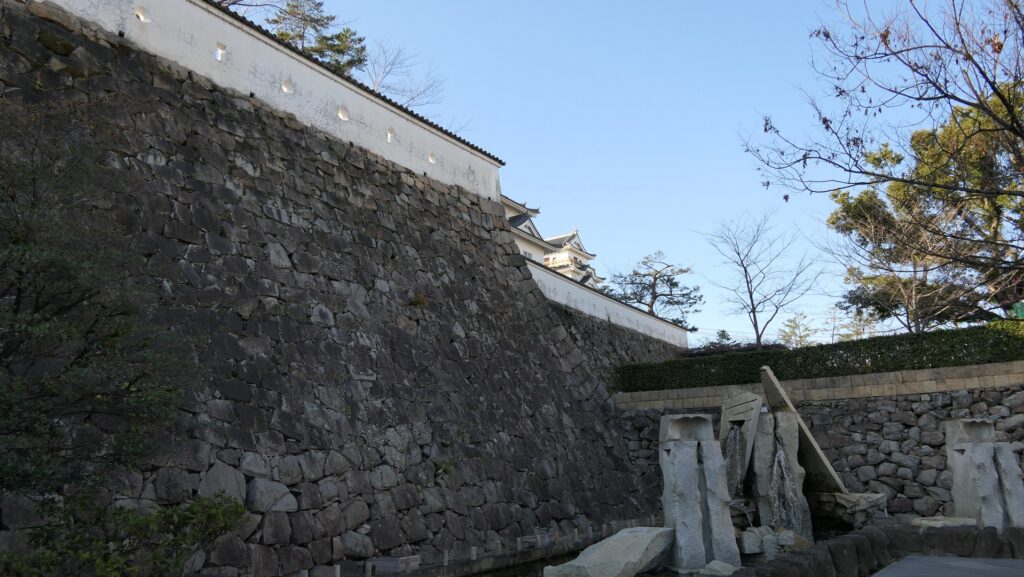
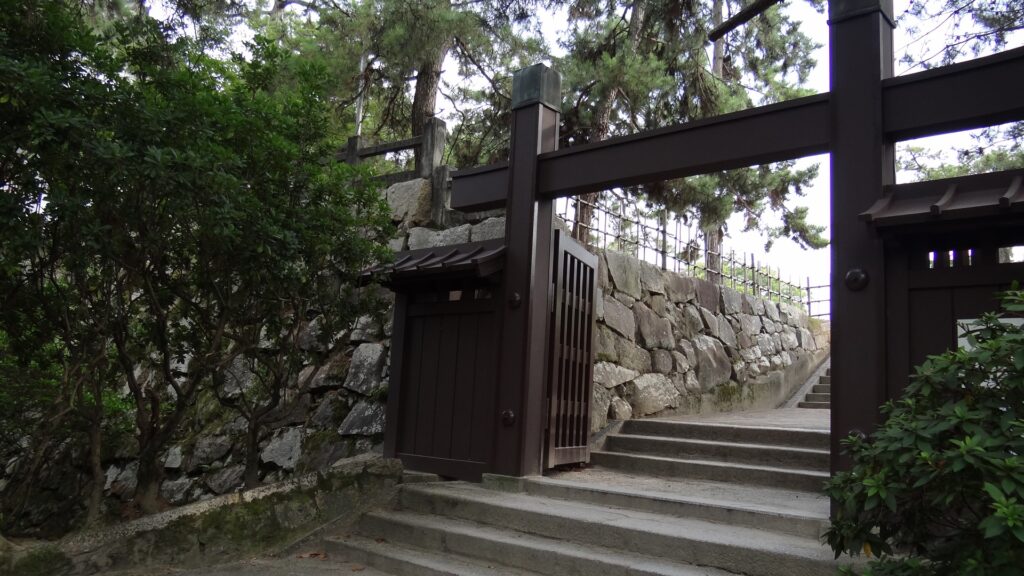
再建された天守~Rebuilt Main Tower
現在見ることができる5層の天守は1966年に再建されたもので、福山城博物館として使われています。ここでは、城や福山市のことをより学ぶことができます。しかし、現在は改装中で、2022年まで続くとのことです。現在の天守の外観は、元あったものとは異なっています。例えば、現在のものは黒い鉄板は装着されていません。ただし、その鉄板は今回の改装により天守に取り付けられるそうです。
The five-layer Main Tower we now see was rebuilt in 1966 and is used as the Fukuyama Castle Museum where you can learn more about the castle and the city. However, the tower is now being renovated. The renovations will continue until 2022. The appearance of the tower is different from the original one. For example, the present one doesn’t have the black steel plates. The plates will be added to the tower after the renovation.
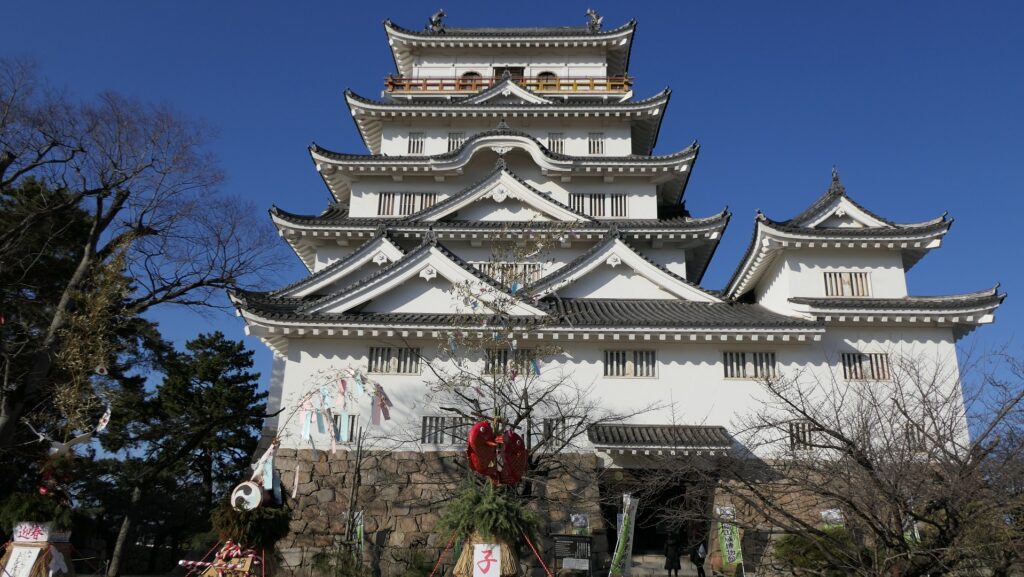

現存する建物~Remaining Buildings
現存する建物は、伏見櫓、筋金御門、鐘楼の3棟だけです。伏見櫓と筋金御門は重要文化財に指定されています。とりわけ伏見櫓は古い形式で大型の3階櫓であり、伏見城から移築されてきました(そのために伏見櫓といいます)。日本で最も古い現存櫓の一つです。ところが、内部が一般に公開されるは、一年に1日だけです。
There are only three remaining buildings in the castle called Fushimi Turret, Sujigane-gomon Gate and the Bell Tower. Fushimi Turret and Sujigane-gomon Gate are designated as Important Cultural Properties. In particular, Fusimi Turret is an old style, large three-story turret that was moved from Fushimi Castle (so called Fusimi Turret). It is one of the oldest remaining turrets in Japan. However, access to its interior by the public, is available just one day a year.
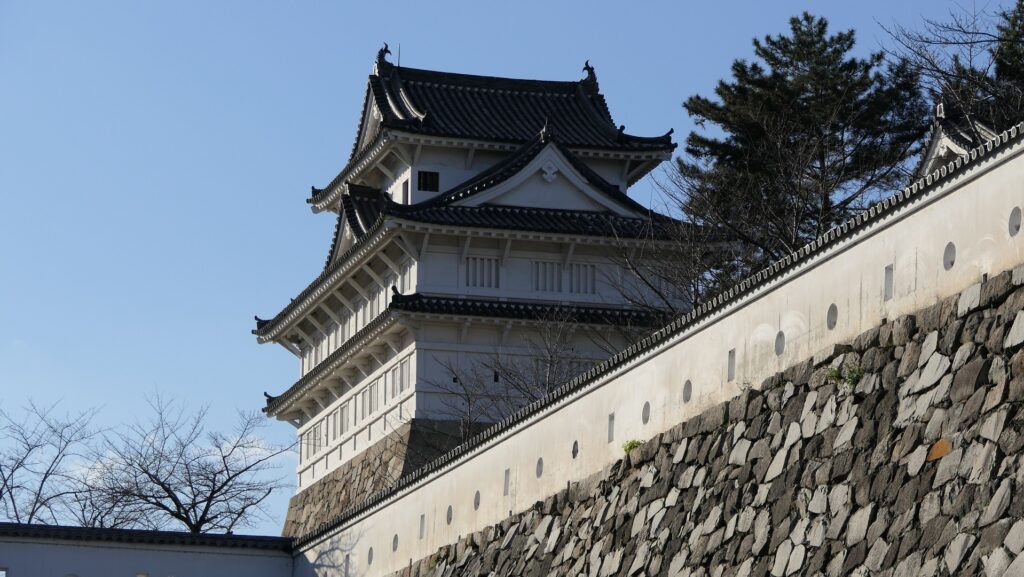
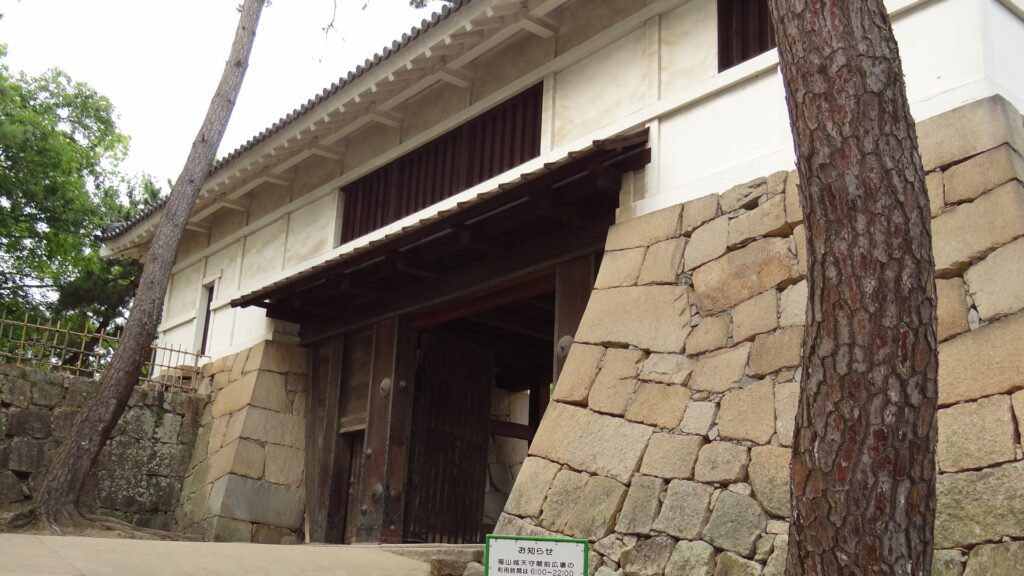
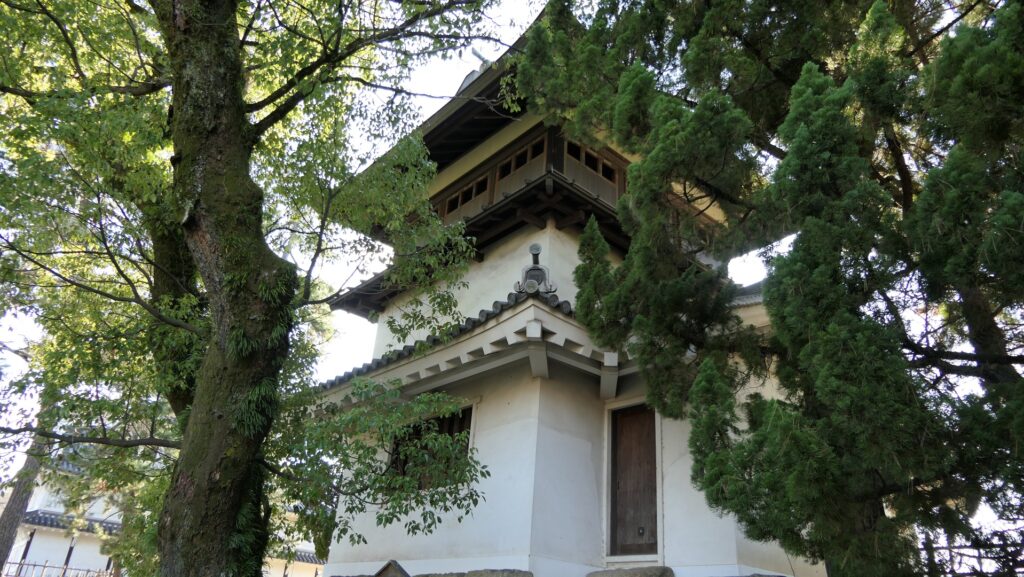
他にも、月見櫓などいくつか城の建物があるのですが、天守と同時期に再建されたものです。
There are also several traditional style buildings such as Tsukimi Turret which were rebuilt at the same time as the present Main Tower.
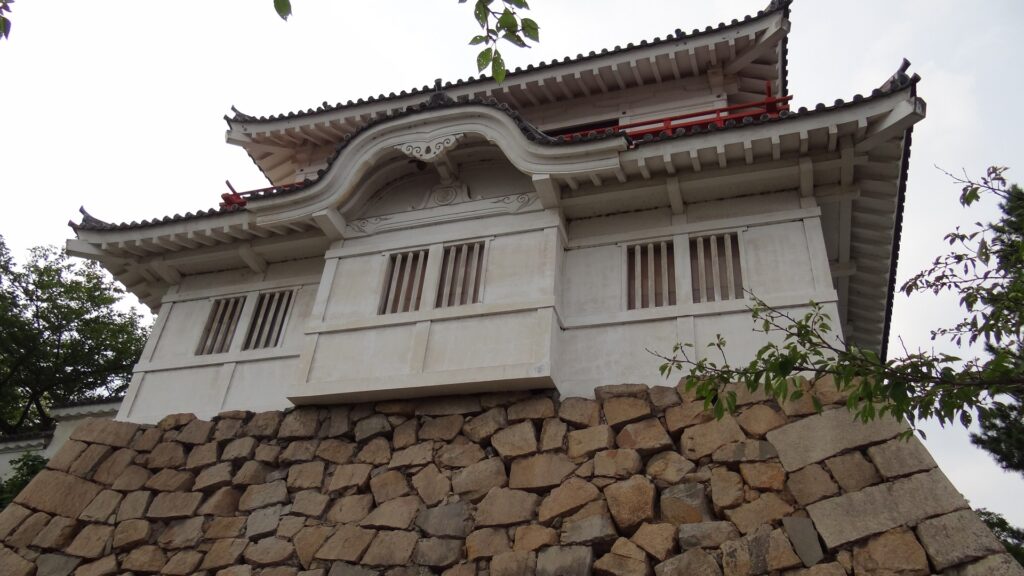
その後~Later History
明治維新後、福山城は廃城となり、本丸を除く建物と敷地は売られていきました。天守などのいくつかの建物と本丸は、福山公園として何とか残りました。天守は1931年には国宝に指定されます。ところが、1945年の福山大空襲により残念なことに焼け落ちてしまいました。
After the Meiji Restoration, Fukuyama Castle was abandoned, and its buildings and ground excluding the Main Enclosure were sold. The Main Enclosure with several buildings such as the Main Tower somehow remained as Fukuyama Park. The Main Tower was designated as a National Treasure in 1931. However, it was unfortunately burned down by The Great Fukuyama Air Raid in 1945.

第二次世界大戦後、城は公園として再び整備されました。1964年に国の史跡に指定されますが、1966年には天守と他の建物が再建されました。一方、公園周辺の地域は完全に市街地化しました。市街地化が進む中、十分な調査がなされずに城跡が破壊されてきたことを指摘する人もいました。
After World War II, the castle was developed as a park again. It was designated as a National Historic Site in 1964, and the Main Tower and other buildings were rebuilt in 1966. On the other hand, the area around the park was completely turned into the city area. Some have pointed out that the ruins of the castle were destroyed without enough investigations during the urbanization.
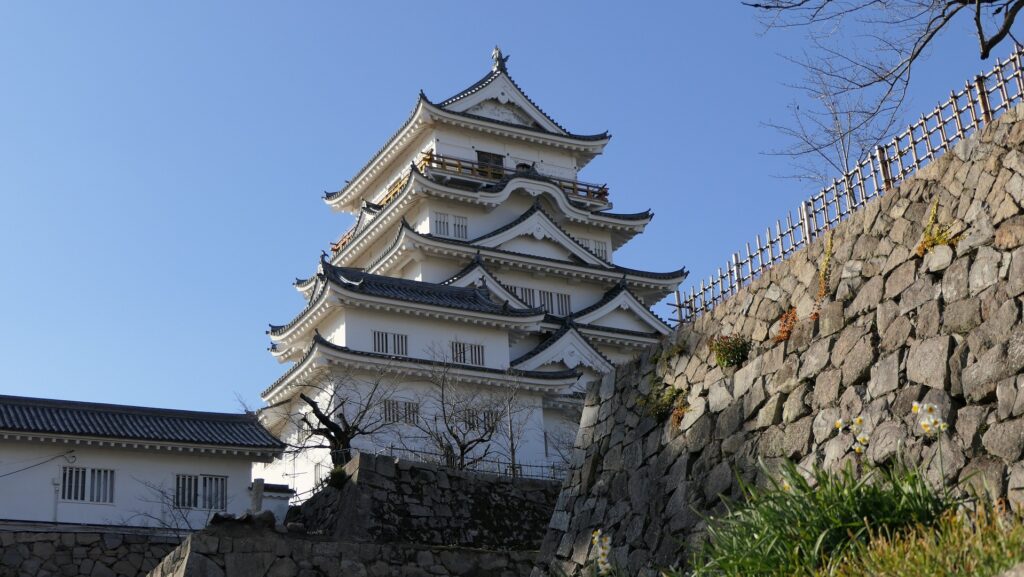
私の感想~My Impression
福山城は歴史公園として大いなる潜在能力があると思います。天守の改装後どうなるか楽しみなところです。しかしながら、行政側は、伏見櫓のような現存建物にもっと焦点を当てるべきと感じます。例えば、一般公開の日をもっと増やしてほしいです。また、過去、城はどのようであったのかを人々に知ってもらうべきでしょう。なぜなら、福山市自体が福山城なしには存在しなかったのですから。
I think that Fukuyama Castle has great potential for becoming a historical park. I’m looking forward to seeing the renewal of the Main Tower after the renovation. However, I feel that officials should feature the remaining buildings such as Fushimi Turret more. For example, it should be open to the public on more days each year. Officials should also let people know what the castle was like in the past because there wouldn’t be Fukuyama City itself without Fukuyama Castle.

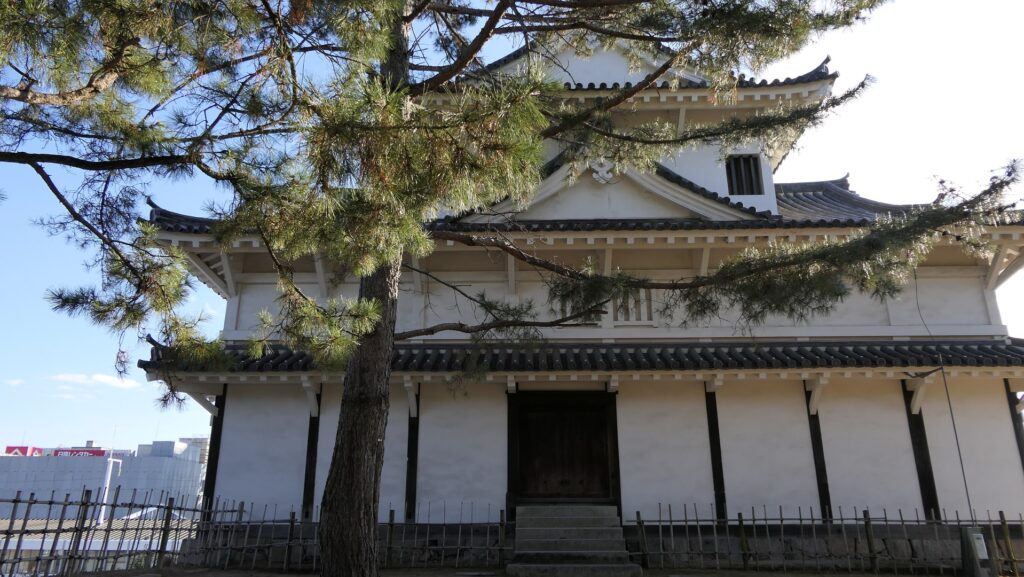
ここに行くには~How to get There
福山城は福山駅北口(福山城口)のすぐ近くです。駅から歩いて1、2分のところです。
Fukuyama Castle is very close to the north (Fukuyama-jo) exit of Fukuyama Station. It takes about one or two minutes to walk to the castle from the station.
リンク、参考情報~Links and References
・福山城博物館、福山市(Fuyama Castle Museum)
・よみがえる日本の城7、学研(Japanese Book)
・「日本の城改訂版第82号」デアゴスティーニジャパン(Japanese Book)
・「幕末維新の城/一坂太郎著」中公新書(Japanese Book)

